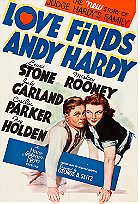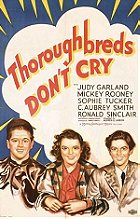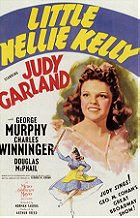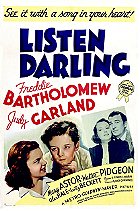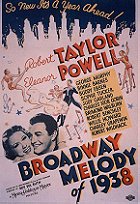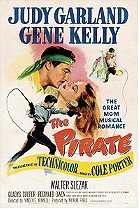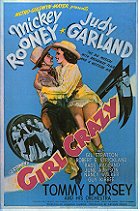The last of their four musical films together, Girl Crazy takes an established property and has Mickey and Judy playing honest-to-goodness characters rather than taking their established personas and building around that. Girl Crazy ends up being one of their strongest films for it. Of course, the Gershwin songbook certainly didn’t hurt.
Based on the stage show of the same name, however fast and loose, Girl Crazy finds Rooney playing an idle rich boy on the decent side of naughty that gets packed away to school out west after one too many bad headlines by his wealthy father. Rooney’s monied character is basically a decent sort that has to learn that there’s more to life than immediate gratification, and Garland’s just the girl to teach him that lesson. Opposites repel and attraction, there’s some misunderstandings and lessons along the way, and we stop every so often for another song-and-dance number.
Yes, Girl Crazy is pure formula, but what a formula! It never overstays its welcome, everything works, there’s some fun supporting players (Nancy Walker as sour to Garland’s sweet, in particular), and a number of knockout musical scenes. Hell, Girl Crazy even offers Rooney another chance to riff and whip out a series of impressions in order to lift Garland’s spirits, and the audience’s by extension.
Who cares if the plot’s nearly transparent when you’ve got June Allyson, in one of her first films, bringing her manic girl-next-door energy to “Treat Me Rough” or Garland breaking your heart during the “But Not for Me” chorus? Girl Crazy works so well because all the parts work with the smooth efficiency of a Swiss watch. Of course, something as dreamy and romantic as the sight of Garland and Charles Walters slow dancing in “Embraceable You” will tend to patch over any problems with predictability.
The absence of Busby Berkeley ironically helps matters as Garland seems more relaxed and natural here, and Rooney doesn’t dominate in the same way he did during Babes in Arms or Babes on Broadway. Their pairing feels more equitable here and they manage to give as good as they get. “Could You Use Me?” finds the pair engaging as mature adults primed for romantic and sexual coupling, and it’s a contrast to more chaste flirtations of their previous three films together.
While Norman Taurog’s direction manages to find the human element in many of the musical sequences, it’s the finale, “I Got Rhythm,” that one remembers. Berkeley’s final production number, “I Got Rhythm” finds cowboys and cowgirls line dancing, marching, firing pistols, and doing rope tricks. The entire thing is a surreal, overripe jewel that functions as the perfect cherry on top of Girl Crazy’s already tasty dessert. His presence isn’t necessarily missed during the rest of the film, Garland strongly disliked him, but he manages to go out with a bang.
As “I Got Rhythm” ends Girl Crazy with a loud pop (mostly from pistols), so too does this film mark the end of Mickey and Judy as a big screen duo. They would share the screen one last time during a scene in Words and Music, but this would prove their final merry-go-round as co-stars. For me, this is probably their strongest film as a pair with Garland’s dramatic talents ripening, Rooney knowing when to scale back or go big, and the uniformly strongest score of them all. Girl Crazy is a carefree musical fueled by the towering achievements of its consummate stars.
 Login
Login
 Home
Home 95 Lists
95 Lists 1531 Reviews
1531 Reviews Collections
Collections
 0 comments,
0 comments, 